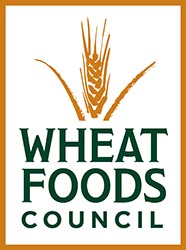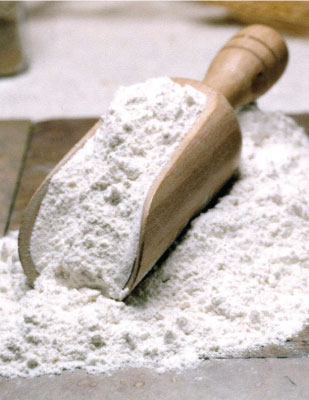If you want to flex your baking muscles, think flour — there’s a lot more than “all – purpose” out there. Many of the flours listed below can be found in the baking aisle of your favorite grocery store. Download PDF
With fall just around the corner – the harbinger of bake sales and holiday entertaining – it’s time to start harnessing the power of flour for your next baking project! Keep in mind that the harder the wheat, the higher the protein content in the flour. Soft, low protein wheats are used for cakes, pastries, cookies, and crackers, while hard, high protein wheats make excellent breads.
White flour
The finely ground endosperm of the wheat kernel.
All-purpose flour
White flour milled from hard wheats or a blend of hard and soft wheats. It gives the best results for a variety of products, including some yeast breads, quick breads, cakes, cookies, and pastries.. All-purpose flour is usually enriched and different brands will vary in performance. Protein content varies from 8-11 percent.
Bread flour
White flour that is a blend of hard, high protein wheats and has greater gluten strength and protein content than all- purpose flour. Bread flour is milled primarily for commercial bakers, but is available at most grocery stores. Protein varies from 12-14 percent.
Cake flour
Fine-textured, silky flour milled from soft wheats with low protein content. It is used to make cakes, cookies, crackers, quick breads and some types of pastry. Cake flour has a greater percentage of starch and less protein, which keeps cakes and pastries tender and delicate. Protein varies from 7-9 percent.
Self-rising flour
Self-rising flour is a convenience product made by adding salt and leavening to all-purpose flour. It is commonly used in biscuits and quick breads, but is not recommended for yeast breads. One cup of self-rising flour contains 1½ teaspoons baking powder and ½ teaspoon salt. Self-rising can be substituted for all-purpose flour by reducing salt and baking powder according to these proportions.
Pastry flour
Has properties intermediate between those of all-purpose and cake flours. It is usually milled from soft wheat for pastry-making, but can be used for cookies, cakes, crackers and similar products. It differs from hard wheat flour in that it has a finer texture and lighter consistency. Protein varies from 8-9 percent.
Whole wheat flour
This flour is milled from the entire kernel of hard red wheat either by grinding the whole-wheat kernel or recombining the white flour, germ and bran that have been separated during milling.
The presence of bran reduces gluten development, therefore, items baked with whole wheat flour tend to be heavier and more dense than those made from white flour. The insoluble fiber content is higher than in white flours.
White whole wheat flour
This flour is milled exactly like whole wheat flour and is nutritionally equivalent to whole wheat flour as well. The only difference is that whole white wheat flour is made with a white, not red wheat variety. The bran of white wheat is lighter in color and has a milder flavor than red wheat and therefore the flour has these properties as well.
Gluten flour
Usually milled from spring wheat and has a high protein (40-45 percent), low-starch content. It is mixed with other non-wheat or low-protein wheat flours to produce a stronger dough structure. Gluten flour improves baking quality and produces a high-protein bread.
To download this as a handout, click here

